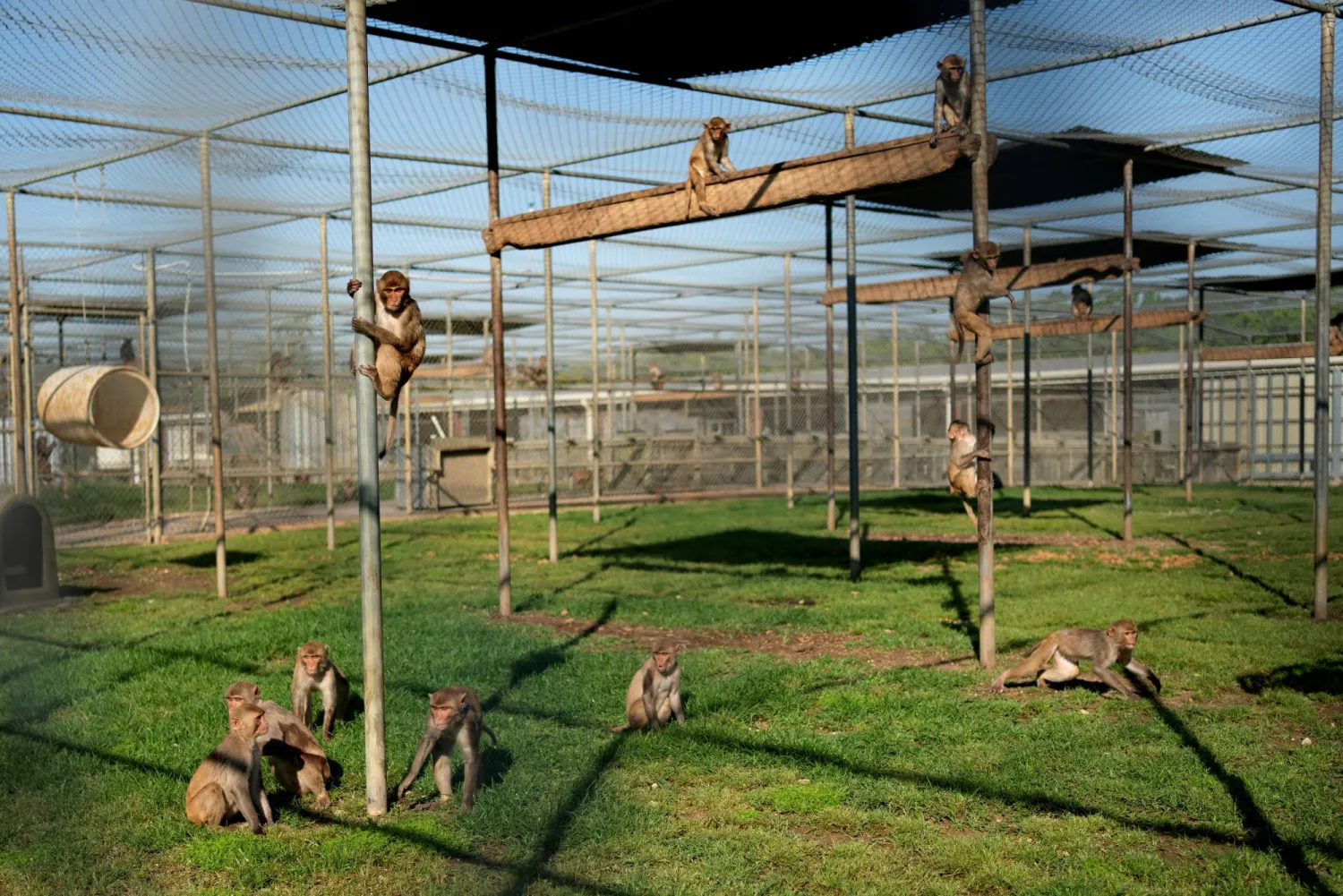The 43 rhesus macaque monkeys that escaped a South Carolina medical lab this week are among the most studied animals on the planet. And for more than a century, they have held a mirror to humanity, revealing our strengths and weaknesses through their own clever behaviors, organ systems and genetic code, The Associated Press reported.
The bare-faced primates with expressive eyes have been launched on rockets into space. Their genome has been mapped. They have even been stars of a reality TV show.
Animal rights groups point out that the species has been subjected to studies on vaccines, organ transplants and the impact of separating infants from mothers. At the same time, many in the scientific community will tell you just how vital their research is to fighting AIDS, polio and COVID-19.
In 2003, a nationwide shortage of rhesus macaques threatened to slow down studies and scientists were paying up to $10,000 per animal to continue their work.
“Every large research university in the United States probably has some rhesus macaques hidden somewhere in the basement of its medical school,” according to the 2007 book, “Macachiavellian Intelligence: How Rhesus Macaques and Humans Have Conquered the World."
“The US Army and NASA have rhesus macaques too,” wrote the book's author, Dario Maestripieri, a behavioral scientist at the University of Chicago, “and for years they trained them to play computer video games to see whether the monkeys could learn to pilot planes and launch missiles.”
Research begins in the 1890s Humans have been using the rhesus macaque for scientific research since the late 1800s when the theory of evolution gained more acceptance, according to a 2022 research paper by the journal eLife.
The first study on the species was published in 1893 and described the “anatomy of advanced pregnancy," according to the eLife paper. By 1925, the Carnegie Science Institute had set up a breeding population of the monkeys to study embryology and fertility in a species that was similar to humans.
One reason for the animal's popularity was its abundance. These monkeys have the largest natural range of any non-human primate, stretching from Afghanistan and India to Vietnam and China.
“The other reason is because rhesus macaques, as primates go, are a pretty hardy species,” said Eve Cooper, the eLife research paper's lead author and a biology professor at the University of Colorado-Boulder. “They can live under conditions and they can be bred under conditions that are relatively easy to maintain.”
NASA rockets and the Salk polio vaccine In the 1950s, the monkey's kidneys were used to make the Salk polio vaccine. NASA also used the animals during the space race, according to a brief history of animals in space on the agency's website.
For example, a rhesus monkey named “Miss Sam” was launched in 1960 in a Mercury capsule that attained a velocity of 1,800 mph (1,900 kph) and an altitude of 9 miles (14.5 kilometers) . She was retrieved in overall good condition.
“She was also returned to her training colony until her death on an unknown date,” NASA wrote.
Mapping the human genome In 2007, scientists unraveled the DNA of the rhesus macaque. The species shared about 93% of its DNA with humans, even though macaques branched off from the ape family about 25 million years ago.
In comparison, humans and chimpanzees have evolved separately since splitting from a common ancestor about 6 million years ago, but still have almost 99% of their gene sequences in common.
The mapping of the human genome in 2001 sparked an explosion of work to similarly decipher the DNA of other animals. The rhesus macaque was the third primate genome to be completed.
For those who have studied the behavior of rhesus macaques, the research is just as interesting.
“They share some striking similarities to ourselves in terms of their social intelligence,” said Maestripieri, the University of Chicago professor who wrote a book on the species.
For example, the animals are very family oriented, siding with relatives when fights break out, he told The Associated Press on Friday. But they also recruit allies when they're attacked.
“They're very political,” Maestripieri said. “Most of their daily lives are spent building political alliances with each other. Does that sound familiar?"
Maestripieri was a consultant for a reality show about some rhesus macaques in India called “Monkey Thieves.”
“They basically started following large groups of these rhesus macaques and naming them,” the professor said. “It was beautifully done because these monkeys essentially act like people occasionally. So it’s fascinating to follow their stories.”
Monkeys that Escaped US Lab Are Species Used for Human Research Since 1800s

Rhesus macaque monkeys feed at the Tulane National Primate Research Center, where the focus of study has shifted to the coronavirus disease (COVID-19) pandemic, in Covington, Louisiana, US, May 14, 2021. REUTERS/Kathleen Flynn

Monkeys that Escaped US Lab Are Species Used for Human Research Since 1800s

Rhesus macaque monkeys feed at the Tulane National Primate Research Center, where the focus of study has shifted to the coronavirus disease (COVID-19) pandemic, in Covington, Louisiana, US, May 14, 2021. REUTERS/Kathleen Flynn
لم تشترك بعد
انشئ حساباً خاصاً بك لتحصل على أخبار مخصصة لك ولتتمتع بخاصية حفظ المقالات وتتلقى نشراتنا البريدية المتنوعة







